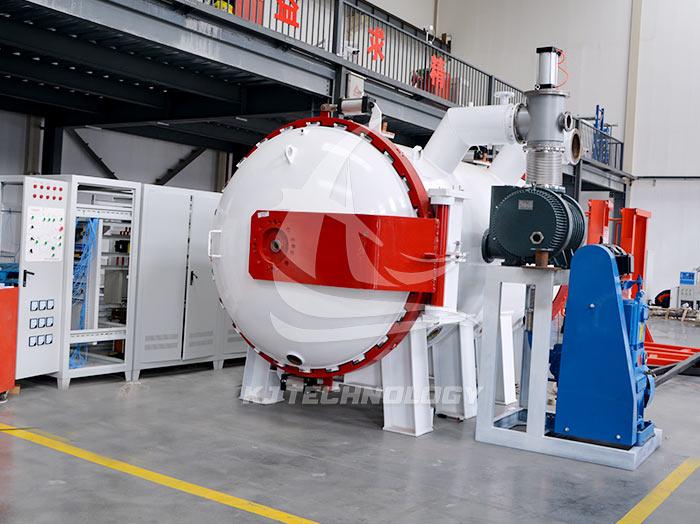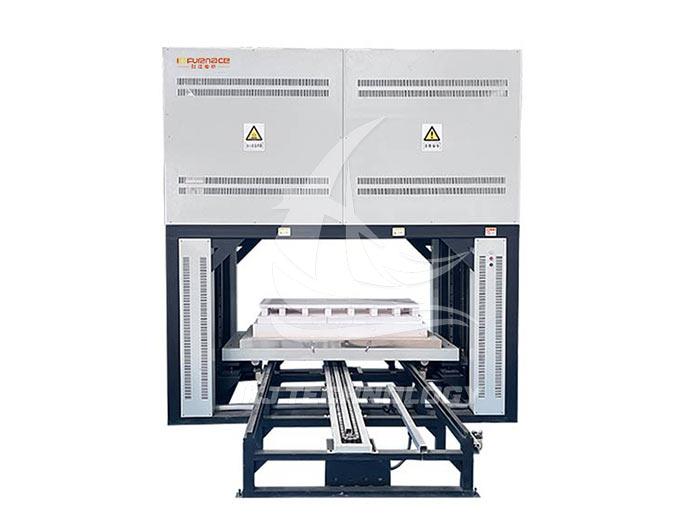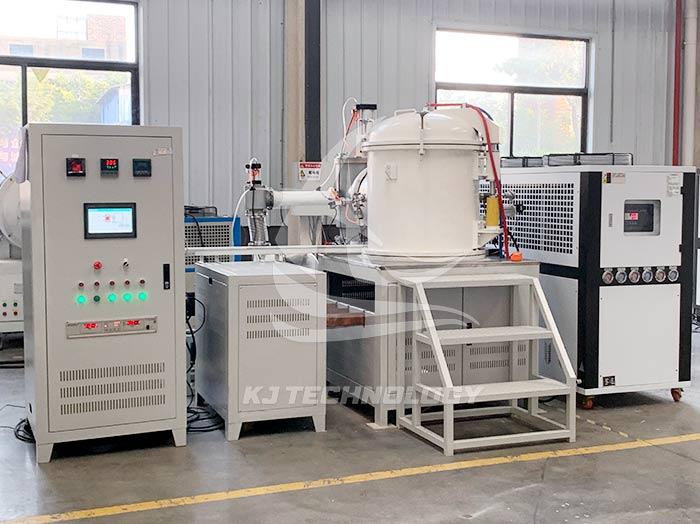Application of Vertical Graphite Vacuum Furnace in Powder Metallurgy Industry
 09-03-2025 Author: KJ technology
09-03-2025 Author: KJ technology
The vertical graphite vacuum furnace is widely and crucially used in the powder metallurgy industry. Through the high-temperature vacuum environment and the unique properties of graphite materials, it significantly improves the quality and production efficiency of powder metallurgy products. The specific application scenarios and analysis are as follows:
1. Core application scenarios
Metal powder sintering
During the sintering process of metal powder, the vertical graphite vacuum furnace promotes solid-phase diffusion between powder particles through a high-temperature vacuum environment (up to 2000 ℃ or above), forming a dense structure. For example, in the manufacturing of high hardness cutting tools and friction materials, graphite furnaces can eliminate pores and defects inside the materials, improve mechanical and physical properties (such as enhanced wear resistance).
Preparation of Hard Alloy
The sintering of hard alloys (such as tungsten cobalt alloys) requires strict control of the atmosphere and temperature to avoid oxidation and carbon loss. The vertical graphite vacuum furnace ensures the uniformity of hard alloy composition and improves product qualification rate through uniform heating of the vacuum environment and graphite heating elements (such as graphite rods and graphite tubes).
Rare earth permanent magnet material processing
Rare earth permanent magnet materials (such as neodymium iron boron) are prone to oxidation during sintering, leading to a decrease in magnetic properties. The vertical graphite vacuum furnace uses a high vacuum environment (10 ⁻³ -10 ⁻⁴ Pa) and precise temperature control (± 1 ℃) to suppress oxidation reactions, improve magnet remanence and coercivity, and meet the needs of high-end motors and sensors.
Ceramic material sintering
The sintering of ceramic materials such as alumina and silicon nitride requires high temperature (1600-2000 ℃) and low oxygen partial pressure environment. The vertical graphite vacuum furnace achieves densification and sintering of ceramic materials through graphite heating element and vacuum system, improving material strength and corrosion resistance.
2. The core advantages of graphite materials
High temperature resistance and thermal stability
The mechanical strength of graphite increases with temperature below 2500 ℃, especially at 1700-1800 ℃, far exceeding that of metal and oxide materials. This characteristic makes it an ideal material for key components such as vacuum furnace heating elements and heat shields.
Low thermal expansion coefficient
The thermal expansion coefficient of graphite is only 1/3-1/4 of that of metals, which can reduce structural stress caused by temperature changes and extend the service life of vacuum furnaces. For example, in sintering processes with frequent temperature fluctuations, the deformation of graphite beams and supports is significantly lower than that of metal materials.
Chemical inertness and self purification ability
In a vacuum environment, graphite reacts with residual oxygen and water vapor to produce gases such as CO, which has the function of purifying the atmosphere inside the furnace. This feature helps to improve the surface smoothness of the workpiece and reduce the thickness of the oxide layer.
Conductivity and processing convenience
Graphite combines the conductivity of metals with the corrosion resistance of ceramics, and is easy to process into complex shapes such as graphite bolts and nuts. For example, high-purity graphite bolts can maintain thread accuracy at high temperatures, meeting the fastening requirements of vacuum furnaces.
3. Application effectiveness and industry value
Improve product quality
The vertical graphite vacuum furnace eliminates internal defects in materials and improves product density and uniformity through a high-temperature vacuum environment. For example, in powder metallurgy gear manufacturing, the fatigue life of gears sintered by vacuum is improved.
lower production cost
Graphite material has a lower cost than metals such as tungsten and molybdenum, and can be processed into complex shapes, reducing metal consumption in vacuum furnace design and manufacturing. For example, using graphite insulation screens can reduce metal consumption.
Expand application scope
The vertical graphite vacuum furnace is suitable for various materials (metals, ceramics, composite materials) and processes (sintering, brazing, heat treatment), promoting the high-end and diversified development of the powder metallurgy industry. For example, in the field of new energy, graphite furnaces are used for graphitization treatment of negative electrode materials in lithium-ion batteries, improving battery capacity and cycle life.








